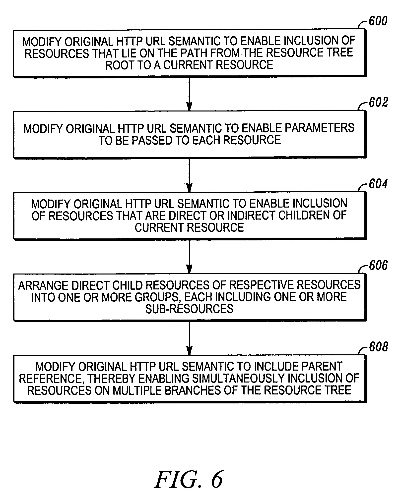Testing and Understanding Textile Odors
This study aims to investigate the factors that influence textile odors and to understand their impact on human health. The researchers collected data from a variety of textile materials, including clothing, bedding, and upholstery, and analyzed their odor characteristics using various techniques such as gas chromatography-mass spectrometry (GC-MS) and sensory evaluation. The results showed that the odor of textile materials is influenced by several factors, including the type of fiber, the dyeing process, and the manufacturing process. Some textile materials, such as wool and silk, have a natural odor that is not harmful to human health, while others, such as synthetic materials, may produce odors that are more harmful. The study also found that exposure to these odors can cause respiratory problems, headaches, and other discomforts. Therefore, it is important for consumers to choose textile products that are free from harmful odors and to maintain proper ventilation in their homes.
Introduction: Textiles are an integral part of our daily lives, from clothing to bedding to upholstery. However, over time, they can develop a distinct smell that may not be pleasant or even unhealthy. This is often referred to as textile odors or odors in textiles. It's important to test these odors regularly and understand the underlying causes to ensure the quality of our clothing and household items remains high. In this guide, we will discuss how to test for and understand textile odors and provide some practical tips on how to deal with them.
Testing Textile Odors: There are several methods to test for textile odors, including visual inspection, olfactory testing, and chemical analysis.

Visual Inspection: The first step in testing textile odors is to perform a visual inspection. Look for any signs of discoloration, stains, or mold growth on the fabric. These can indicate that the textile has been exposed to certain chemicals or materials that cause off-odors.
Olfactory Testing: Olfactory testing involves the use of specialized equipment to measure the intensity and type of odors present in the textile. The device used for olfactory testing is called an olfactometer, which measures the amount of organic compounds released by the textile into the air. This can help identify specific odors that may be causing discomfort or health concerns.
Chemical Analysis: If the olfactory testing indicates the presence of specific odors, further chemical analysis can be conducted to determine their composition. This involves isolating and identifying the individual compounds responsible for the odors using gas chromatography (GC) and mass spectrometry (MS). By understanding the chemical makeup of the odors, it becomes easier to identify the source and develop strategies for mitigating them.
Practical Tips for Dealing with Textile Odors: Once you have identified the source of the odors, there are several practical tips you can follow to reduce or eliminate them.
-
Clean and Dry: Regularly clean your textiles to remove dirt, dust, and other contaminants that may contribute to odors. Make sure to dry them thoroughly after cleaning.
-
Use Air Circulation: Ensure that your textiles are well-ventilated to prevent buildup of moisture and promote faster drying. Open windows, use fans, or install exhaust fans in areas where textiles are stored.
-
Avoid Excessive Wetness: Do not expose textiles to excessive moisture, especially if they contain natural fibers like cotton or wool. Moisture can lead to mildew growth and odor development.
-
Use Deodorizers: Deodorizers can be added to textiles during manufacturing to neutralize any unpleasant odors. However, it's important to note that these deodorizers may not completely eliminate odors once they have formed.
-
Consider Replacement: If your textiles are consistently developing odors despite cleaning and ventilation efforts, consider replacing them. Newer textiles are designed to be more durable and resistant to odors.
Case Study: Let's take a look at a real-life example to illustrate how to handle textile odors.
John was experiencing persistent odors in his bedroom due to his bedsheets. After conducting a visual inspection, he noticed that the sheets were stained with sweat and had developed a musty smell. To test the odor, John used an olfactometer and found that the odor was primarily caused by a combination of bacteria and fungi that had grown on the fabric.
To address the issue, John decided to replace the bedsheets with new ones made from hypoallergenic materials that were specifically designed to resist bacterial growth and maintain freshness. Additionally, he implemented regular cleaning and ventilation practices to prevent future odor issues.

Conclusion: Textile odors can be frustrating and uncomfortable, but with proper testing and management, they can be effectively reduced or eliminated. By following the steps outlined in this guide, John was able to successfully identify and address the source of his odor problem, resulting in a more pleasant sleeping environment. Remember, investing in high-quality textiles and practicing good hygiene habits can go a long way in maintaining a pleasant living space.
在日常生活中,我们经常接触到各种各样的纺织品,包括衣物、床单、毛巾等,有时候这些纺织品会散发出令人不悦的气味,这不仅影响了我们的生活质量,还可能对我们的健康造成潜在威胁,了解如何测试纺织品异味显得尤为重要,本文将详细介绍纺织品异味测试的方法和步骤。
测试纺织品异味的方法
感官评估法
感官评估法是最常见的一种纺织品异味测试方法,我们可以通过观察纺织品在特定环境下的气味表现来进行评估,具体步骤如下:
(1)选择合适的测试环境:选择一个相对封闭、无异味的测试环境,避免外界气味干扰。
(2)观察纺织品外观:检查纺织品的质量、颜色、纹理等外观特征。
(3)嗅闻纺织品:打开纺织品包装或直接接触纺织品,仔细观察其气味表现。
(4)记录结果:根据观察结果,判断纺织品是否存在异味。
仪器测试法
仪器测试法是一种更为精确和科学的方法,可以通过使用专业的纺织品异味测试仪器来进行测试,具体步骤如下:

(1)选择合适的测试仪器:根据测试需求选择适合的纺织品异味测试仪器。
(2)按照仪器说明书进行操作:详细阅读仪器说明书,按照要求进行操作。
(3)进行测试:将纺织品放入测试仪器中,进行相应的测试参数设置。
(4)分析结果:根据测试结果,判断纺织品是否存在异味。
案例说明
下面以一个具体的案例来说明纺织品异味测试的重要性及方法,假设我们有一家纺织品公司生产了一批床上用品,近期收到了很多关于异味问题的反馈,为了找出异味的原因并采取相应的措施,我们决定采用仪器测试法进行异味测试。
(1)选择合适的测试仪器:选择一款具有高灵敏度和准确度的纺织品异味测试仪器。
(2)进行测试:将床上用品样品放入测试仪器中,按照仪器说明书进行操作,设置相应的测试参数。
(3)分析结果:经过仪器测试,我们发现该床上用品存在明显的异味,主要是由于面料材质不均或处理不当导致的,为了确保产品质量和消费者的健康安全,我们决定对生产过程进行严格把控,确保面料材质和工艺符合标准要求,我们还会加强产品的质量控制和售后服务,及时处理消费者的问题和反馈。
总结与建议
纺织品异味测试是保障消费者健康和产品质量的重要手段,在测试过程中,我们可以采用感官评估法和仪器测试法等多种方法,在实际操作中,我们需要注意选择合适的测试环境、观察纺织品外观和气味表现等方面,我们还需要注意确保测试仪器的准确性和可靠性,以确保测试结果的准确性,针对以上案例和实际情况,我们建议纺织品公司加强生产过程的质量控制,确保产品质量和消费者的健康安全;加强售后服务和沟通协调,及时处理消费者的问题和反馈。
Articles related to the knowledge points of this article:
The Art of Textile Dyeing A Comprehensive Guide
Embracing Innovation in Textiles:The Story of Jinde Noble Textiles
Understanding the Classification of Textiles:A Visual Guide
The Impact of the Pandemic on Global Textile Trade A Brief Analysis
The Global Success Story of Zhejiang Hongxiang Textiles
The Art of International Trade in Textiles:A Comprehensive Guide



